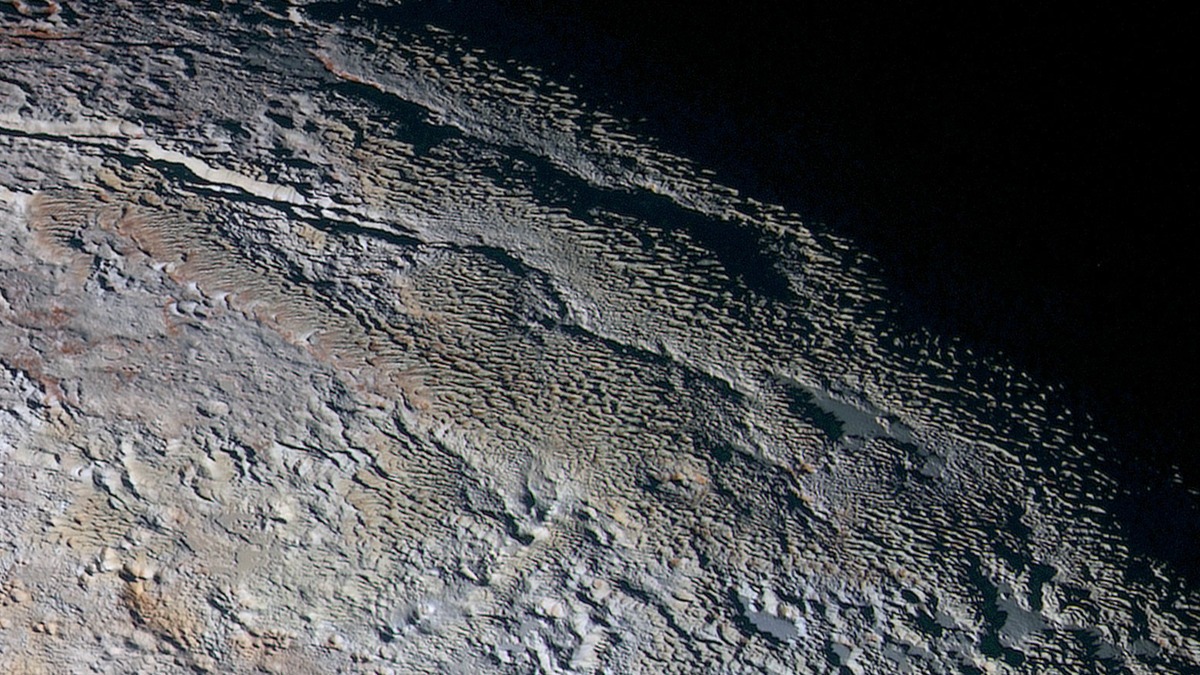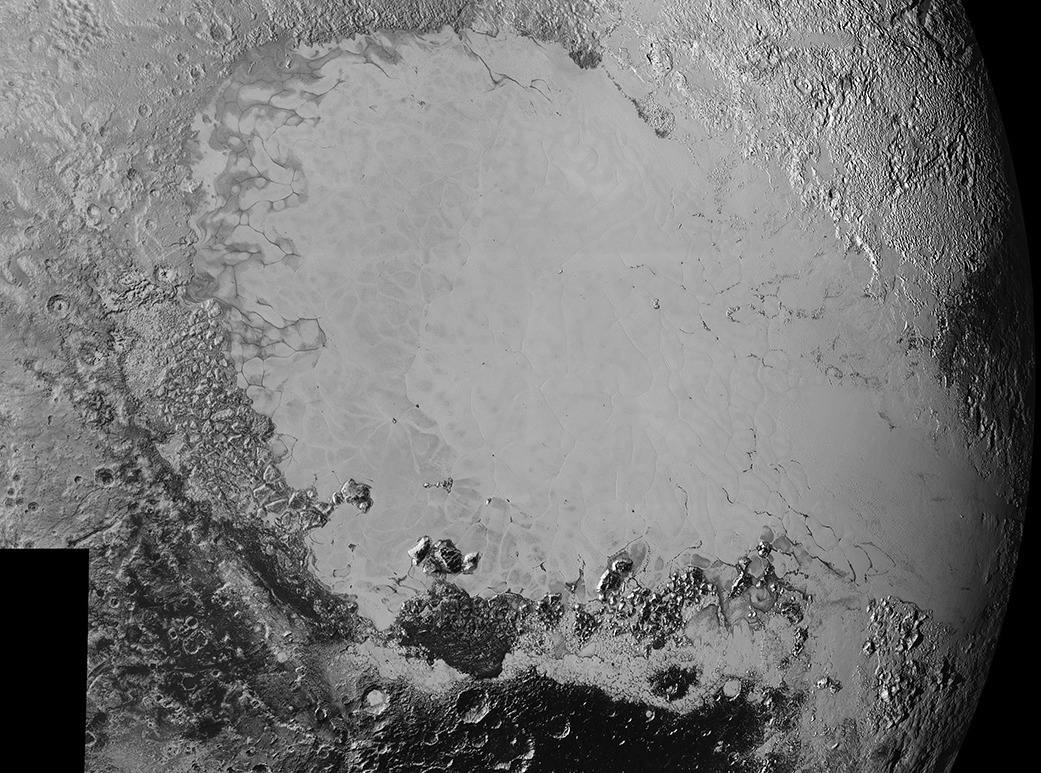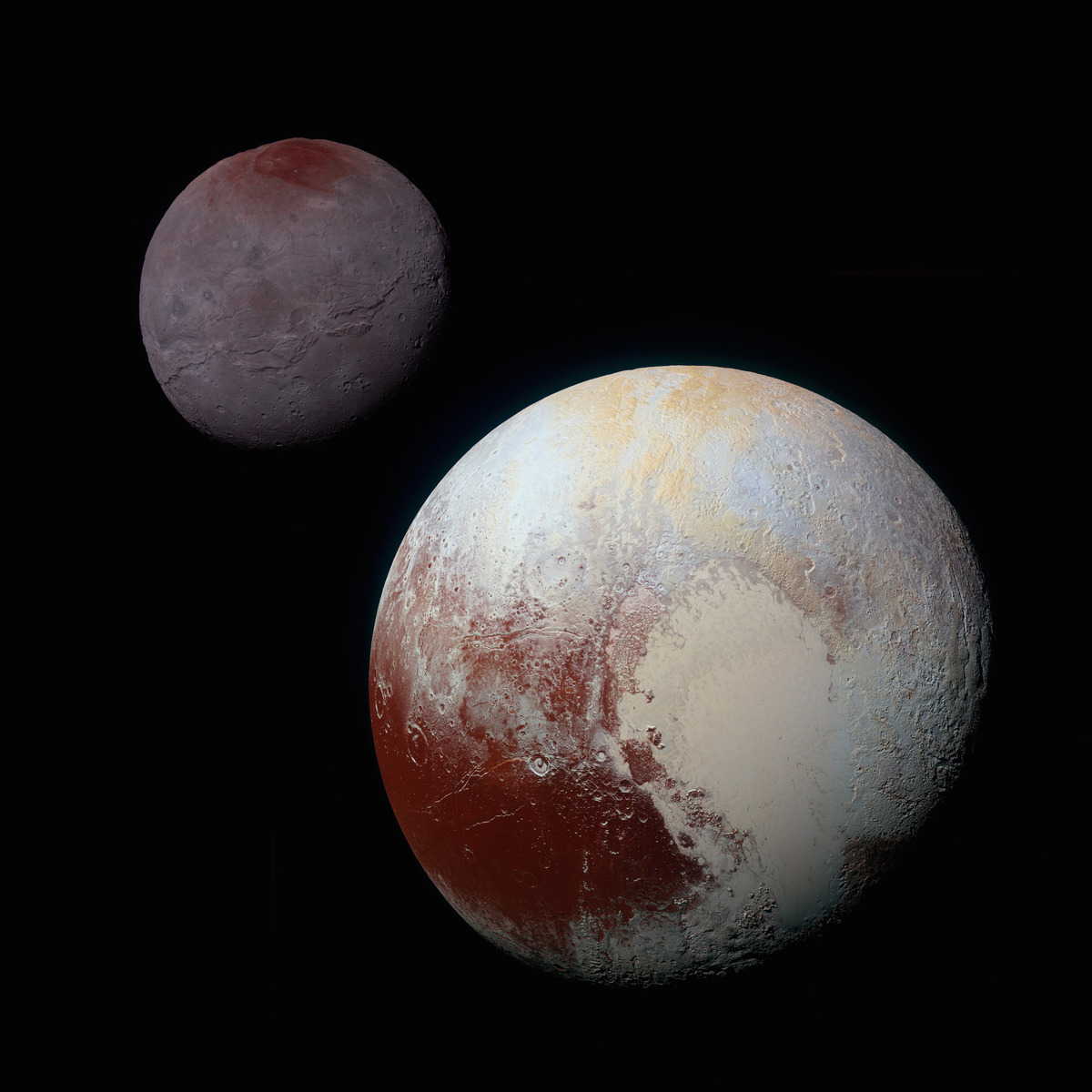
Pluto is full of surprises — about 100 of them and counting, to be exact. Scientists working with the New Horizons mission — which make its close flyby of Pluto in July — have been sifting through the data beamed back to Earth from the spacecraft that is now more than 3 billion miles from our planet.
In just three months, the research team has dramatically reshaped the way we understand the dwarf planet and its five moons.
Alan Stern, New Horizons principal investigator, and his colleagues detail a multitude of new findings about Pluto in this week’s issue of the journal Science.
“There are something approaching 100 discoveries that are listed in that paper,” Stern told Mashable in an interview.
Before New Horizons flew by the dwarf planet, scientists expected to find a long-dead, cold and heavily cratered rock, but what they found instead was shocking.
Pluto’s surface is cratered in some places, but it also plays host to huge mountains made of ice and strange rippled ground that looks somewhat like the skin of a dragon, but on a much larger scale.
“This is surprising because it was believed that Pluto — due to its small size — lost all its heat and evolved into a frozen world with no significant geological activity,” MIT professor Hilke Schlichting, who wasn’t affiliated with the study, told Mashable via email.
“If we can understand the origin of the geological activity of Pluto it may also help explain the geological activity of some of the icy satellites of Saturn and Jupiter,” Schlichting wrote.
But in Pluto’s case, the dwarf planet doesn’t orbit a huge planet that can influence its geology through tidal heating. Instead, the world is somehow shaping its own geology in an as-yet undetermined way.
These unexpected findings have led scientists to the conclusion that Pluto was much more geologically active than anyone gave the tiny world credit for.
Stern has often referred to Pluto as something out of science fiction, and perhaps the most sci-fi-like part of the dwarf planet is an area known as Sputnik Planum in Pluto’s huge icy heart.
The plain is covered in nitrogen ice, and there are signs that the icy structures are flowing on the surface. Flows also appear to be coming from Pluto’s mountains, Stern added.
Sputnik Planum is also crater-free, meaning that it was “born yesterday” in geological terms, according to Stern (more cratered areas indicate older parts of a world where the crust hasn’t been resurfaced due to more recent geological activity.)

It’s even possible that some of the structures that look like mountains might be icebergs on Pluto slipping around on a layer of nitrogen.
New Horizons scientists still aren’t sure what could be driving such active geology, though they have tossed a few ideas around.
One thought is that Pluto’s crust could be hiding a subsurface ocean that would drive the world’s geology, though there is no “telltale” evidence backing that idea yet, Stern said.
Pluto’s origin story
New Horizons is already giving scientists a better sense of the makeup and possible formation of Pluto and its moons.
Scientists have long thought that Pluto and its largest moon Charon — plus its four small moons Nix, Hydra, Kerberos and Styx — were formed billions of years ago when two large bodies impacted each other.
However, data from New Horizons shows that Pluto and Charon actually have very similar densities, meaning that the original two bodies were also similar. This could mean that Pluto and Charon formed earlier than expected, possibly having profound implications for when and how other bodies in the Kuiper Belt and around the solar system came to be, according to the study.
However, an answer to that question likely won’t come for a while, Stern says.

At the moment, New Horizons is speeding through the Kuiper Belt, getting farther away from Earth, while beaming back data collected during its Pluto flyby.
Stern sees his current job as something akin to an emergency room doctor, with a deluge of data coming in each day that needs to be analyzed and directed to different scientific teams.
“Our job is just to triage the new data and move it along because something is coming tomorrow,” Stern said.
Because of this hurried processing, scientists on the New Horizons team likely won’t get around to using their data for modeling complex processes that could explain Pluto’s unique look — and even formation — for a while.
This month, the team will start moving the spacecraft to a potential rendezvous with another object in this part of space, possibly allowing scientists to get an up-close look at another never-before-studied world.